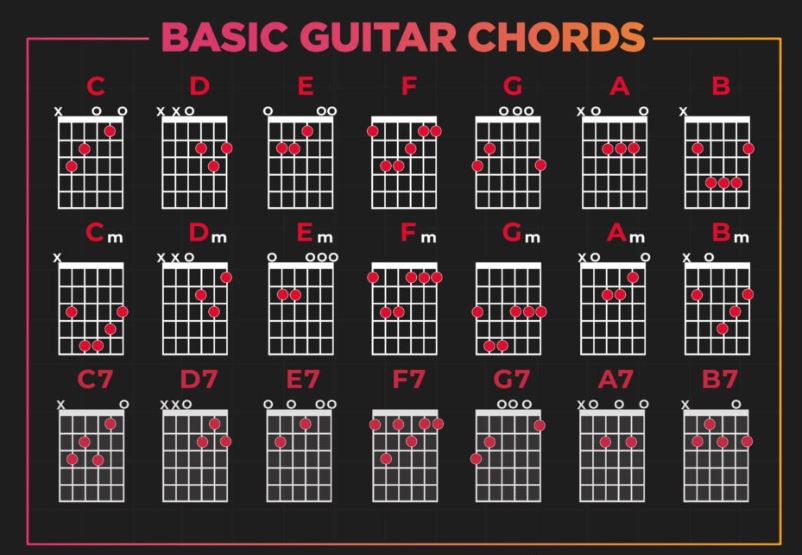
Introduction:
For aspiring guitarists, the journey to musical proficiency begins with understanding and mastering chords. Guitar chord charts serve as indispensable tools in this process, providing a visual roadmap to navigate the fretboard. In this comprehensive guide, we will explore the significance of chord charts, how to read them, and their role in transforming you into a versatile and confident guitarist.
The Anatomy of a Guitar Chord Chart:
1. Grid Representation:
A guitar chord chart is essentially a grid that represents the frets and strings of the guitar. Vertical lines denote the strings, while horizontal lines represent the frets. Each box on the chart corresponds to a specific fret and string intersection.
2. Finger Placement:
Within each box on the chart, dots or numbers indicate where to place your fingers on the fretboard. These symbols represent which fingers to use and where to press down to produce the desired chord. Typically, numbers 1, 2, 3, and 4 correspond to index, middle, ring, and pinky fingers, respectively.
Reading Chord Charts:
1. String Orientation:
The horizontal lines on the chart represent the guitar strings, with the bottom line indicating the low E string and the top line representing the high E string. Mastery of string orientation is fundamental for accurate chord execution.
2. Fret Numbers:
The vertical lines represent the frets on the guitar neck. The numbers at the top of the chart indicate which fret you should start on. If there’s no number, it usually implies the open position (playing the strings without pressing any frets).

Practical Applications:
1. Learning Songs:
Chord charts are essential for learning and playing songs. By understanding how to read these charts, you can quickly pick up new songs and expand your repertoire.
2. Creating Progressions:
Experimenting with different chord charts empowers you to create your own progressions. This skill is crucial for songwriting and improvisation.
3. Barre Chords:
As you advance, chord charts become indispensable for mastering barre chords. Barre chords involve pressing down multiple strings with one finger, and the charts guide you through these more complex formations.
Conclusion:
Guitar chord charts are your gateway to unlocking the vast potential of the fretboard. Regular practice with various charts will build your muscle memory and enhance your fretboard knowledge, allowing you to express yourself fluently on the guitar. So, grab your guitar, familiarize yourself with these charts, and embark on a musical journey where each chord chart becomes a stepping stone to guitar mastery. Happy playing!